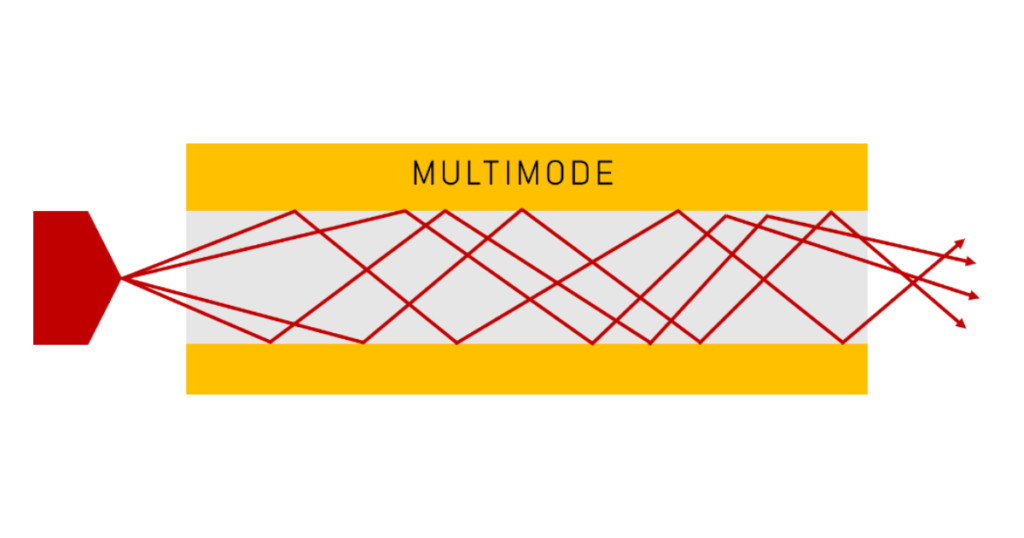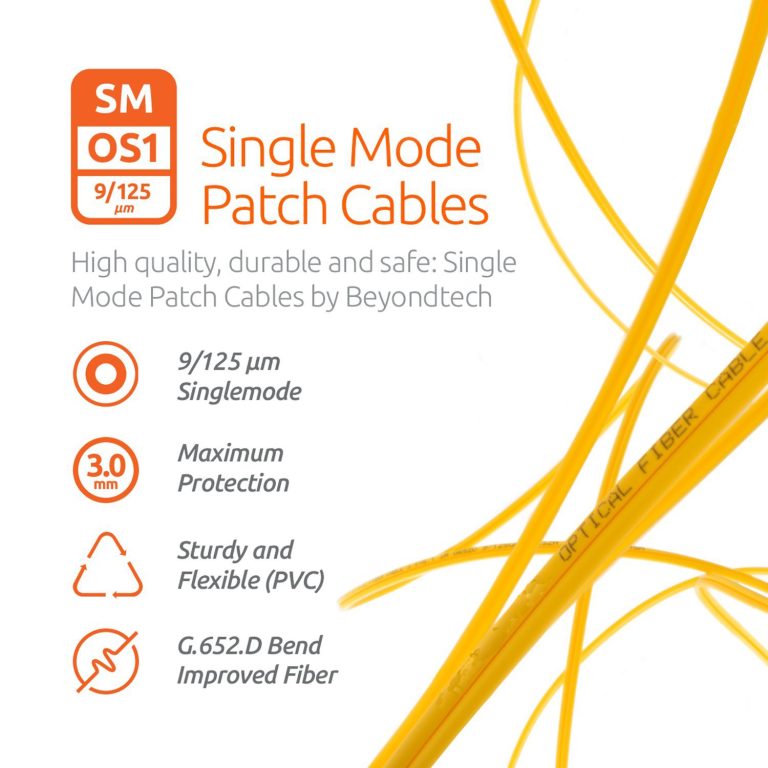Fiber Optic Selection Guide: Single Mode VS Multimode
Fiber Optic Selection Guide: Single Mode VS Multimode
[1. Introduction]
In modern society, the rapidly evolving information transmission technology, especially fiber-optic communication technology, has been widely applied. The single-mode and multimode fiber, as the two main types of fiber, have their own advantages, disadvantages, and applications. This article will delve into their unique characteristics and associated applications.
[2. The Working Principle of Fiber Optics]
- Basic structure and working principle
The fiber optic cable is mainly made up of a very thin core (Core) and a cladding (Cladding) that wraps around the core. Fiber optics transmit light signals using the principle of total reflection, which keeps the light signals continuously reflected and transmitted inside the fiber.
- Classification of modes
In fiber, light can propagate in various paths, or modes. Based on the number of modes that can propagate, fiber is classified into two categories: single-mode fiber and multimode fiber.

[3. Single-Mode Fiber (SMF)]
- Characteristics: The core of the single-mode fiber only has a few micrometers (generally 9μm). It only allows one mode light signal generated by a laser light source to pass through.
- Advantages: Since it mostly permits the light to propagate along the axial direction, each light path length is the same, avoiding modal dispersion, and making long-distance and high-speed transmission possible.
- Application scenes: Because of these advantages, single-mode fiber is primarily used for long-distance, large bandwidth transmission scenarios, such as transmission lines for telephone and television communication networks.
- Possible limitations: However, the construction cost of single-mode fiber is higher, and the construction is more challenging, requiring more precise light sources and connection and reception equipment.

[4. Multimode Fiber (MMF)]
- Characteristics: The core diameter of multimode fiber is large (generally 50μm or 62.5μm), and it allows hundreds, even thousands of modes light signals to transmit at the same time.
- Advantages: It permits larger divergent angles of light to enter and is not sensitive to the alignment errors of various devices, meaning that construction is relatively simple. Given the same transmission distance and magnitude bandwidth requirements, multimode fiber has a lower system cost.
- Application scenes: Therefore, multimode fiber is mainly used for computer networks and some medium and short-distance large-capacity transmission with relatively lower costs.
- Possible limitations: However, the bandwidth of multimode fiber is limited, which confines its information transmission rate and transmission distance.

[5. Single-mode VS Multimode]
When choosing fiber optics, practical needs need to be considered. If it’s long-distance, high-speed, large bandwidth transmission, especially in outdoor, remote areas, single-mode fiber is the best option. For some medium and short-distance, large-capacity, low-cost transfers such as buildings, LAN (Local Area Network), SAN (Storage Area Network), multimode fiber has the advantage of lower cost.
In summary, there is no absolute good or bad between them. It would help if you combined the specific application requirements to flexibly choose the type, ensuring both transmission quality and considering economic benefits. Hope this article is helpful in your selection of fiber optics.

